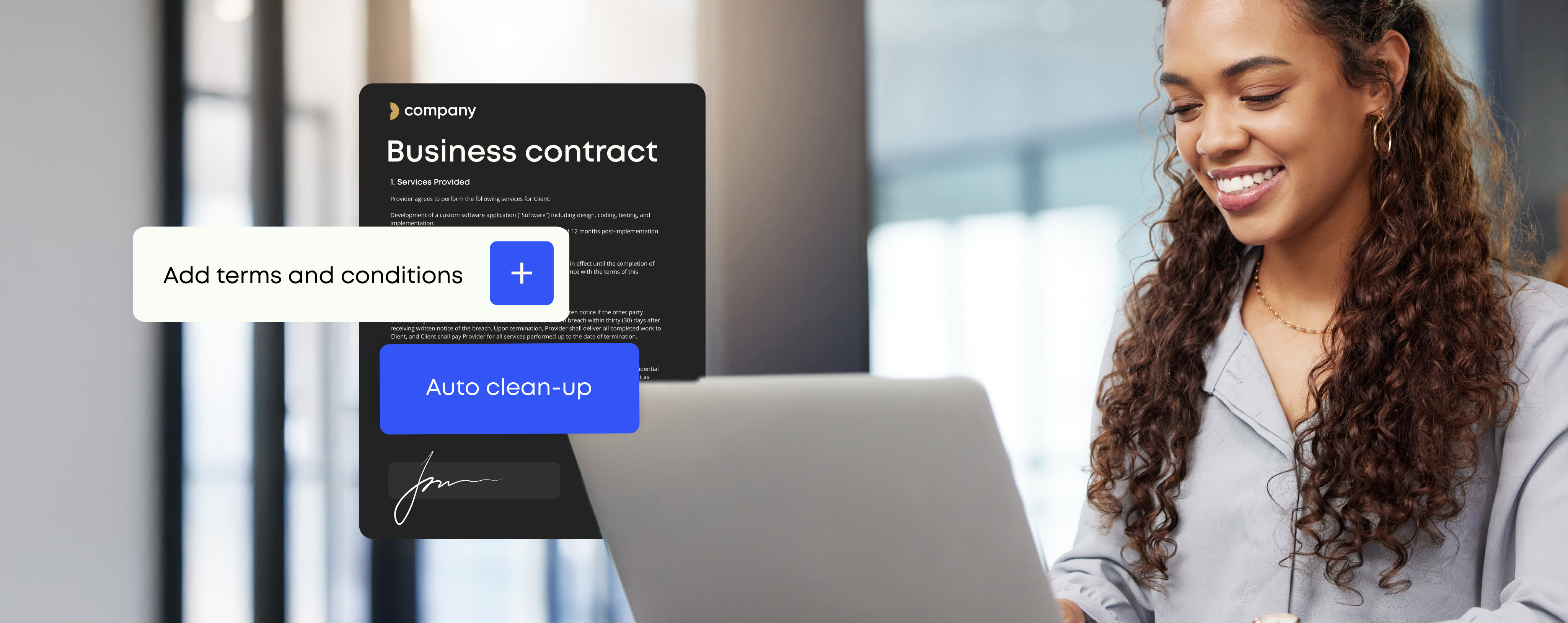Law and Order: Best Practice Legal Template Management

Law firms create and revise documents all day, every day.
This means A LOT of documents: contracts, briefs, pleadings, memorandums, resolutions, trusts – the list is never-ending. But how efficient is your document creation process? And do you and your firm trust it?
Document administrators, knowledge managers and law librarians must ensure legal teams are always armed with up-to-date, best practice document formats and content in order to produce documents which are correct.
From a base of templates, boilerplates and other types of content, lawyers use their professional judgement to adjust and build documents for each specific matter. Using these building blocks speeds up the process of document creation, and helps lawyers ensure their documents are compliant and contain the correct details.
However, while this works in theory, in practice it can be difficult if systems and processes aren’t up to the challenge – particularly if you can’t make agile, precise and dynamic updates across your precedents and templates. Lawyers will very quickly lose faith in an out-of-date precedent system and avoid using it altogether, causing difficulties due to the extra time wasted.
Too many documents, too little time…
Quick and easy document creation is crucial to keeping law firms running at the speed and efficiency levels that clients expect. Due to the competitive nature of the legal industry, law firms cannot afford to waste time on document creation, as they face a constant need to reduce costs alongside simultaneously maintaining quality. Legal administration teams are a central part of ensuring that this can happen, through guaranteeing the elements needed for legal documents are always up to date and accessible. If this does not occur, then employees may create their own documents by copying sections from a variety of older ones, because they need to save time and stay on top of heavy workloads. These documents run the risk of being incompliant and incorrect, both of which can have disastrous consequences for the law firm.
Automating document creation both prevents this risk occurring, and provides a host of other benefits. Using templates and forms with up-to-date and best-practice pre-filled details, content, and features helps save time usually spent assembling documents and also improves consistency, accuracy, and the overall quality of legal work.
The key difficulty is how to maintain the wealth of legal templates and keep them up-to-date, without requiring hours of manual work to track down legacy content, and input from IT departments to update boilerplate text.
Thankfully, there is good news for knowledge managers and document admins: with a cloud-based template management system implemented into the daily office workflow, it becomes easy to gain back control and manage your firm’s legal documents in real time, while simultaneously keeping the constant flood of knowledge in check – all without having to resort to IT each time information need to be updated.
Document assembly: “never re-key what you can automate”
Formatting legal documents is a complex process, and formatting issues are incredibly common due to the nature of the work. Fixing format inconsistencies can waste valuable time and manpower, and easily become exasperating for anyone working on a document.
Document assembly software and other legal document management solutions provide centralized access to compliant, firm-branded templates for general correspondence, precedents, and other documents frequently used in your law office.
As document assembly software has advanced, the features it offers have increased, in a way which hugely benefits law firms. Through software, relevant clauses can be pulled into a complex contract based on a variety of questionnaire choices made by the employee, who will also be notified when these have been updated, to ensure their documents remain compliant. This intelligent automation is also able to adapt documents to user profiles, meaning time is saved as employees do not need to manually fill in details. It also enables integration with other databases, such as iManage, meaning it seamlessly works alongside the normal workflow for lawyers, making it intuitive and easy to use.
The template challenges for knowledge managers
Often, these solutions can offer benefits, but fall short at the same old difficulty: How can such a huge volume of legal documents be controlled and kept up to date? How can boilerplates be maintained? How should templates be distributed so everyone has access to them? And how do admins know the templates are actually being used by the lawyers and legal support staff?
Software such as Templafy offers a solution to this difficulty, through a central admin platform enabling governance. Those with admin rights, such as knowledge managers, are able to update templates, boilerplate text, disclaimers, and more. Due to a cloud-based centralized platform, these updates are available to all users immediately, regardless of their location, meaning that even if employees are with clients or travelling, they can be sure they are using the most correct and up-to-date versions. As the application opens within Office applications, employees don’t need to disrupt their workflow, but will be met where they are comfortable working, reducing the problem which often comes from software that is difficult to integrate into workflows. Knowledge managers can rest secure knowing that their work was not in vain, and employees are easily able to find and use all the content they need. The impact of this is huge, as it saves time across the entire organization, and helps ensure documents are always correct, minimizing fears of incompliance or wrong details.
Legal series: Knowledge automation
Enhance your document creation workflow
But how important is legal template management, really?
Most lawyers will check the boilerplate text used, and check and re-check every document and contract before sending, and most lawyers use a system of drafting and saving documents which suits their own purposes, and has caused no difficulty. Given this, there may be queries raised about just how important it is to have a template management system.
It’s important to note that template management doesn’t just benefit the individual – it also benefits the organization as a whole. When employees join or leave an organization, it is easier for them to navigate all the templates and information that they will need if there is clear software to help them do this – similarly, when they leave or go on vacation, information is not lost as it has been easily stored and shared. Collaborative work is also much easier, as everyone is able to access the same content from the same place.
On top of this, time is saved across the entire organization, because the time saved in every employees day is multiplied across the firm, resulting in huge savings in terms of productivity and time through automating documents.
Automated document software is also futureproof, as the legal industry becomes increasingly reliant upon technology. Due to the competitive nature of the industry, it is vital that legal firms are keeping up with moves made by those at the top of their game, in order to not lose out on potential clients. Legal technology is a fast-growing field, and it is necessary for success that all legal firms consider how they can use software to best optimize all areas of their workflow.
How a cloud-based dynamic template management system can help manage legal templates for everyone in the firm
Dynamic cloud-based template management solutions such as Templafy can help harness the benefits of your legal templates more effectively. As it automates many aspects of legal template management, it keeps templates and other document assets safe, accurate and compliant. Through integration with other systems that the law firm uses, such as iManage, and other storage solutions, the data that is needed for legal documents is always close to hand, and ensuring this is up to date is no longer a challenge.
What’s more, due to the cloud-based nature of the solution, document admins can carry out template updates in minutes with just a few clicks, rather than relying on the help of IT experts who are needed for on-premise systems. Through template management, law firms can ensure they are keeping up with the latest technology utilized by competitor firms, saving both employees and the organization time, and creating documents that are compliant and correct.


